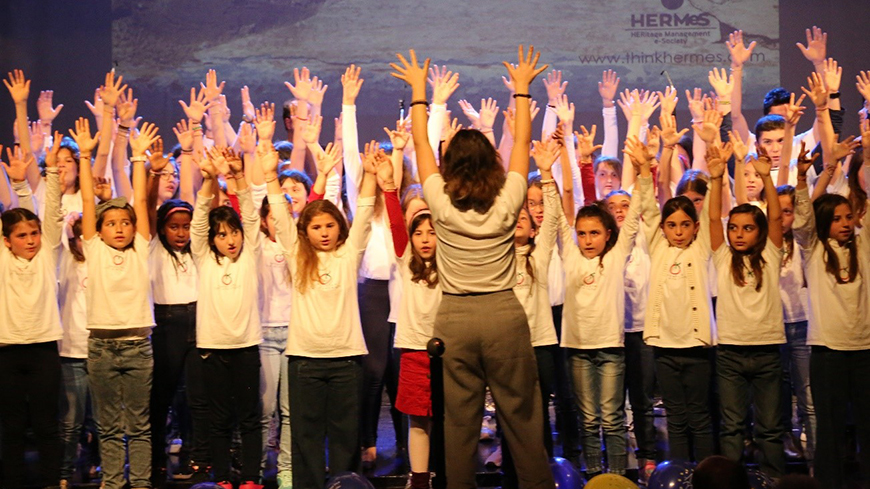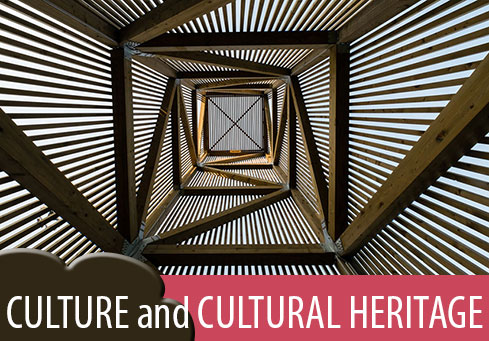Location of the initiative:

Initiator
Association, community, local/regional authorities
Relation to Strategy 21 Recommendations:
S2 - Make heritage more accessible
Time span of the initiative:
Start date: 1/4/2018 - End date: 30/4/2019 (was official end date). Nevertheless, the activities continue today with the support of the community
Motivation / Methodology
The objective of this initiative is to bridge the communicative gap between the tangible and intangible heritage of a city by applying innovative off-the-shelf digital heritage services among its citizens and stakeholders. The challenge is to make citizens aware about the vulnerability of their built heritage and encourage them to digitally share their personal stories (crowd-sharing) related to buildings. This way, an intangible part of the city’s cultural heritage can be preserved and creatively re-used to showcase the collective memory of the city, aligned with its architectural heritage.
Starting with the development of a digital preservation management and registration system (HER.M.eS.) in the form of a collection portal of the historic buildings of Hermoupolis, we now aim towards its sustainability, integrating it into a more accessible tool that can also incorporate intangible qualities. We assumed that citizens, as ambassadors of this initiative, could provide the qualitative dimension needed: the stories. Narrating, sharing, and re-creating stories of the city can raise a feeling of belonging among citizens and raise awareness about their fragile heritage. In addition, by acknowledging their heritage and feeling that they all belong in that city, they become able to shape their own opinion for its conservation management plan in the future.
Towards this idea, we started our initiative “100 buildings/100 stories”; each story contributed by citizens relates to a building. Once the story is registered and related to a building, the building gets a QR sign. The sign directs users to a responsive online page via their mobile phones that presents the story and the building through textual and audio-visual information.
The initiative took part in the best “European Heritage Stories to be heard”. We first followed a typical communication strategy once the award was won and started spreading the news via social media and local newspapers. To become more effectively heard, we created short promo video and radio spot to raise awareness about the endangered buildings of the city and the possibility of keeping them alive by “talking through them” and sharing their stories.
In order to start sharing and uploading stories from the citizens, we created an online form. The easily accessible form requests the user to: either (a) share a story, or (b) propose a building of the city that is worth mentioning at the list of the 100 buildings, or (c) both. The form also provides data space to upload photos or videos. This way, the team started registering stories, digitizing, re-designing, and hosting them at responsive online pages via strikingly.com. We also involved local schools and held formal and informal meetings and seminars with their teachers. To better communicate our methodology, we developed an online toolkit for educators with guidance and basic instructions to search for stories and uniformly create videos, audios or podcasts, etc., together with their students.
To boost the visibility of the project, we hosted a social event in the form of cultural festival at the historic theatre. The event was about education and youth and their contribution to the research and dissemination of local and European cultural heritage. We gathered 10 relevant actions that had been already organized by local cultural institutions, public schools, and the local University under the umbrella of the previous “European Year of Cultural Heritage”. Along with their representatives, we started producing short videos that narrated and presented the actions. All together acted as paradigms for the rest of the citizens to imitate and follow in order to enhance the local cultural heritage.
In this project’s context, stories do not need to be “old” or only refer to the past. Buildings can marvelously and creatively incorporate the present and the past, the modern and the classic.
Obstacles / Barriers
One of the biggest obstacles we faced was the permission needed by the respective department of the Ministry of Culture in order to place the QR signs at the buildings, specially the public ones. It is about a lengthy process that also involves a well-structured application for the request to be accepted.
Another interference had to do with the online digital application form we created for the citizens to start sharing and uploading their stories. We knew from the beginning that this would not be the appropriate kind of submission for the elderly ones or those not-so-keen-on technology. To tackle this phenomenon we held private meetings, especially after the cultural festival at the theatre. During the event, we had an information booth where we could inform the elderly crowd on how to come in touch with us and reach us in order to share their stories with us in person.
Change / Impact
Thanks to the cultural event held at the historic theatre of the city, the initiative gained enormous visibility and more and more people started reaching us and asking about where and how they could contribute to the urban memory of Hermoupolis.
One of the major outcomes of the project is the active involvement of the local schools’ teachers, professors and kindergarteners to “adopt” historic buildings of architectural significance and create digital footage, either videos or audios or collages or paintings, in the form of narratives and stories about the building, together with their students. Through this activity, both teachers and students get to better know and appreciate the built heritage of their city, historical events from Greek and European history that are linked with the buildings and their owners, as well as stories from everyday people that used to live in this city of wealth and glare but also of subsequent decline and fall. Moreover, the fact that stories need to be in digital form in order to be hosted in online responsive pages, increases the skills of digital competence of the teachers and the students. These activities are ongoing and, gladly, we are moving towards their establishment in every year’s school schedule.
In addition, our existing network with local and national cultural institutions and NGOs is growing, integrating more partners from Europe. International cultural institutions with similar actions have been informed about “100 buildings / 100 stories” initiative and are in close communication since then with our NGO for future collaboration either in H2020 projects or in mutually organized summer seminars at out island. We are looking forward these potential collaborations and their benefits for the local economy and tourism.
Last but not least, we proceeded to our first formative evaluation of the final digital delivery application with the QR signs placed at the first 12 buildings, to investigate users’/citizens’ acceptance, but also their curiosity to scan the QR signs while experiencing a walk inside the city either with a guide or without one.
Due to weather conditions and current season at the island (winter), it was impossible to find visitors or tourists to evaluate the application. Nonetheless, we currently assumed inhabitants of Hermoupolis that don't originally come from Syros, as visitors of the city that are still learning about its cultural heritage. Hence, we decided to organize a classic heritage walk in the city center, where all architectural phases of Hermoupolis can be identified in chronological order, unraveling the history of the city, and lasting approximately 1,5 hours. The methods used were qualitative observations and an online questionnaire. We observed three groups of participants, where one of them was a group of kindergarteners which participated in a formal seminar entitled “Learning my city: Hermoupolis; every building is a story”. Overall, the results of this evaluation process highlighted some issues concerning opportunistic interaction and willingness of the users to interact with the QR sign. Probably, the application is more meaningful for peculiar visitors, that have both the time and the necessary mobile tools to access the content (QR scanners, mobile data). Since the project is still on-going, we plan another evaluation during spring or summer when locals and visitors/tourists will be able to take walks inside the city and have more spare time to delve into the stories.
Lessons learned
This initiative presents a case study where a successful (Europa Nostra Award) digital preservation management system for built heritage (HER.M.eS.) is expanded with the addition of innovative, off-the-shelf functionalities in order to host stories of the city shared by its citizens. HER.M.eS. is already being applied to other historic cities of islands in Greece (Corfu, Samos, Lesvos, Chios, Tinos) as well as in Albania (Gjirokaster) and North Macedonia (Ochrid). Hence, it is highly possible for the public authorities to expand this initial digital preservation management system for built heritage to also incorporate intangible heritage aspects, like stories of the buildings and its people. On the one hand, this can be considered as another practice to further preserve the history of the city. But on the other hand, this actually brings citizens closer to each other and to their city, thus better appreciating and more responsibly protecting their cultural heritage.
Reflecting on our recent results and becoming more resilient through the current initiative, would help us inform other cities, on how to enlarge a digital preservation management system for built heritage and how to engage citizens via successful civic participation practices and events.
Online resources
Contact information
Contact person: Chatzigrigoriou Pavlos
Organisation : HERMeS NGO & Syros Institute
Email: [email protected]
Phone: +306974424174
Website: www.hermesngo.org; www.syrosinstitute.eu
Source of financing
Financing: European Heritage Stories, Europe in my region, EU Regional funds, Private funds (Syros Institute)




